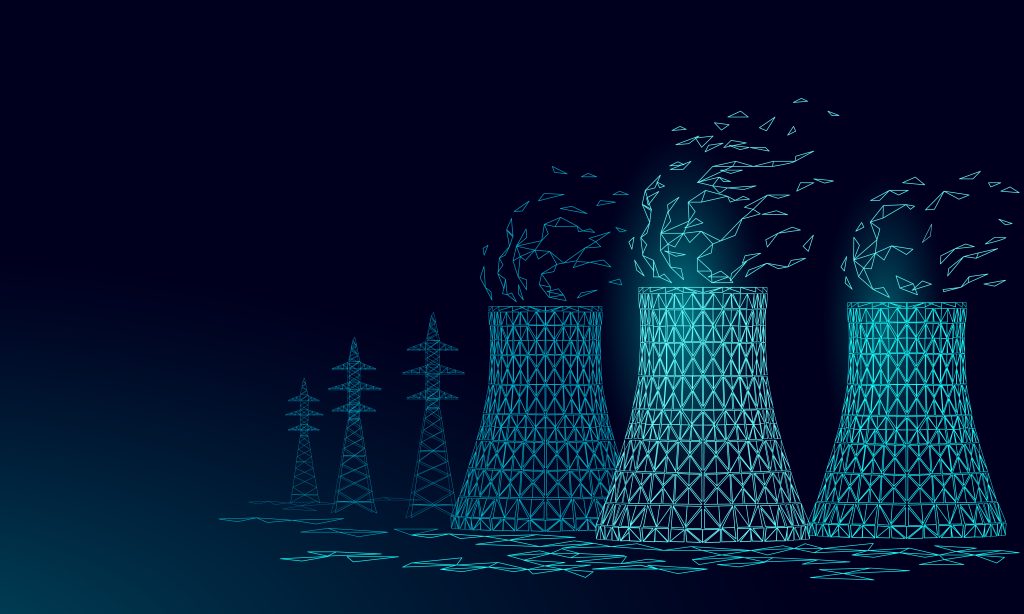Curious about the energy density of nuclear power compared to coal power? We’ll provide you with a comparative analysis of these two energy sources. Nuclear and coal power are major players in the global energy industry, differing greatly in energy density and environmental impact. By examining their efficiency and potential for reducing carbon emissions, we’ll explore the advantages and disadvantages of each. Whether you’re a researcher, energy enthusiast, or interested in understanding our energy systems, this article offers valuable insights into the energy density of nuclear versus coal power.
Energy Density of Nuclear Power
When comparing the energy density of nuclear power to coal power, you’ll find that nuclear power has a significantly higher energy density. Energy density refers to the amount of energy that can be obtained from a given volume or mass of fuel. In the case of nuclear power, this energy density is much higher than that of coal power.
One of the reasons for the higher energy density of nuclear power is the fuel used. Nuclear power plants use uranium or plutonium as fuel, which have a much higher energy content per unit mass compared to coal. This allows nuclear power plants to generate more electricity using a smaller amount of fuel.
In addition to the higher energy density, nuclear power also offers several other advantages. Safety regulations are in place to ensure the safe operation of nuclear power plants and to prevent accidents. Waste disposal is carefully managed, with spent nuclear fuel being stored in secure facilities. Public perception of nuclear power has improved over time, with a greater understanding of its potential and safety measures in place.
Future advancements in nuclear power technology hold promise for even higher energy densities and improved safety features. As global energy demand continues to rise, nuclear power can play a significant role in meeting this demand while reducing carbon emissions. Its high energy density and potential for future advancements make it a viable option for sustainable and clean energy generation.
Energy Density of Coal Power
To understand the energy density of coal power in comparison to nuclear power, it is important to consider the fuel composition and its implications for energy generation. Here are some key factors to consider when comparing coal power to nuclear power:
- Efficiency comparison: Nuclear power is more efficient than coal power. While the efficiency of coal power plants typically ranges from 30% to 40%, nuclear power plants can achieve efficiencies of over 90%. This means that a larger percentage of the fuel’s energy is converted into electricity, making nuclear power more efficient.
- Resource availability: Coal is a finite resource and its availability is limited. On the other hand, nuclear fuel, such as uranium, is more abundant and can be extracted from various sources around the world. This makes nuclear power a more sustainable option in terms of resource availability.
- Safety concerns: Coal power plants release pollutants such as sulfur dioxide, nitrogen oxide, and particulate matter, which can have detrimental effects on human health and the environment. In contrast, nuclear power plants have strict safety measures in place to prevent accidents and contain radiation.
- Waste management: Coal power plants produce large amounts of ash and other solid waste, which need to be properly managed and disposed of. Nuclear power plants also produce waste in the form of spent fuel rods, but this waste can be safely stored and managed through methods such as reprocessing and long-term storage in geological repositories.
- Carbon emissions: Coal power is a major contributor to greenhouse gas emissions, releasing large amounts of carbon dioxide into the atmosphere. Nuclear power, on the other hand, does not emit carbon dioxide during the generation of electricity, making it a cleaner option in terms of carbon emissions.
Environmental Impacts of Nuclear Power
Nuclear power plants have significant environmental impacts, including the production of radioactive waste and potential risks associated with accidents or meltdowns. The management of nuclear waste is a critical issue in the nuclear industry. The radioactive nature of the waste poses a long-term threat to human health and the environment. Stringent measures are in place to ensure proper disposal and containment of nuclear waste to minimize radiation exposure.
The public perception of nuclear power is influenced by high-profile accidents such as Chernobyl and Fukushima. These incidents have heightened concerns about the safety and potential dangers of nuclear energy. However, it is important to note that nuclear accidents are rare and the industry has implemented stringent safety protocols to prevent such incidents.
In terms of renewable energy integration, nuclear power can play a complementary role. While renewable sources like solar and wind are intermittent, nuclear power provides a stable and continuous source of electricity. This stability can help balance the intermittent nature of renewable energy and ensure a reliable power supply.
To provide a visual representation of the environmental impacts of nuclear power, the following table compares key aspects:
| Environmental Impact | Nuclear Power |
|---|---|
| Nuclear Waste Management | High |
| Radiation Exposure | Potential Risks |
| Nuclear Accidents | Rare |
| Public Perception | Concerns |
Environmental Impacts of Coal Power
Coal power has its own set of environmental impacts, with high levels of air pollution and greenhouse gas emissions being a significant concern. Here are the key environmental impacts of coal power:
- Air pollution: Coal power plants release a variety of pollutants into the atmosphere, including sulfur dioxide (SO2), nitrogen oxides (NOx), and particulate matter (PM). These pollutants can contribute to respiratory problems, heart disease, and other health issues. They also contribute to the formation of smog and acid rain.
- Water contamination: Coal power plants require large amounts of water for cooling purposes. This water, when discharged back into rivers or lakes, can be contaminated with heavy metals, such as mercury and arsenic, as well as other pollutants. This can harm aquatic ecosystems and pose risks to human health.
- Land degradation: Coal mining and extraction can lead to land degradation, including deforestation, soil erosion, and habitat destruction. The excavation of coal also produces large amounts of waste material, known as coal ash, which can contaminate nearby land and water sources.
- Health effects: The pollutants emitted by coal power plants can have significant health effects, particularly on vulnerable populations such as children, the elderly, and individuals with respiratory conditions. These health effects can include respiratory illnesses, cardiovascular problems, and even premature death.
- Climate change: Burning coal releases large amounts of carbon dioxide (CO2), a greenhouse gas that contributes to climate change. The combustion of coal is one of the leading sources of CO2 emissions globally, and these emissions are a major driver of global warming and climate change.
Economic Considerations for Nuclear Power
When considering the economic viability of nuclear power, it is important to examine its cost factors and potential for long-term financial stability. Cost analysis plays a crucial role in determining the investment feasibility of nuclear power projects. The capital costs of nuclear power plants include site preparation, construction, commissioning, and financing. These costs can be expressed as dollars per kilowatt of generating capacity. Additionally, operating costs, which encompass fuel, operations and maintenance, and provisions for decommissioning and waste management, need to be considered.
One significant aspect of the economic landscape for nuclear power is the role of government subsidies. Government support can greatly impact the economics of nuclear power, as it can help offset the high capital costs associated with building a nuclear reactor. Moreover, electricity pricing and market competition are key factors that affect the economic viability of nuclear power. The price at which electricity generated by nuclear power is sold in the market determines its profitability. Market competition from other energy sources, such as renewables or fossil fuels, also plays a role in shaping the economic outlook for nuclear power.
Economic Considerations for Coal Power
To continue the analysis of economic considerations in energy production, let’s explore the cost factors and financial stability associated with coal power.
- Cost Analysis:
- Coal power plants require significant upfront capital costs for construction and equipment.
- Operating costs include expenses for fuel, maintenance, and environmental compliance.
- Decommissioning costs and waste management add to the overall expenses.
- The levelized cost of electricity (LCOE) is an important metric for comparing the cost of coal power with other energy sources.
- Job Creation:
- The coal industry has historically been a major source of employment, providing jobs in mining, transportation, and power plant operations.
- The economic impact of coal power includes job creation in related industries and supporting communities.
- Market Competitiveness:
- The market competitiveness of coal power depends on factors such as fuel prices, technological advancements, and government regulations.
- In recent years, the declining cost of renewable energy sources has increased competition for coal power.
- Government Subsidies:
- Government subsidies can influence the cost and viability of coal power.
- Subsidies may be provided to support the industry, encourage job retention, or address environmental concerns.
Technological Advancements:
- Advancements in coal power technology, such as carbon capture and storage (CCS), can help reduce emissions and improve the environmental performance of coal-fired plants.
- However, these technologies often come with additional costs and require ongoing research and development.
Understanding the economic considerations of coal power is crucial for policymakers, investors, and energy planners as they navigate the complex landscape of energy production and strive for a sustainable and cost-effective energy mix.





